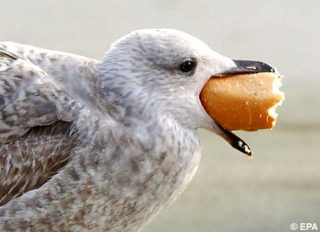Each person in the United States produces about 4.5 pounds of waste every single day. There are a lot of myths about where this garbage goes, how its processed, and the environmental impacts of that waste. Today, I am excited to take a guided landfill tour at the High Acres Landfill & Recycling Center and help debunk the garbage myths that are garbage! The plant we are visiting is a part of the Waste Management Company in New York, which is a group that has been in the business since 1971. While this experience statistic may seems irrelevant, the reality is that there are many aspects to consider with regard to landfill operations that require an array of knowledge. Some of these sets include a knowledge of science, including chemistry, physics, and environmental science; an acclamation and familiarity with the community of which it is a part; the laws of the state in which it is located, as many require permits and have specific regulation; and finally, an understanding of the animals that inhabit the area and the materials that comprise the ecosystem of the land on which the landfill is situated. These necessary understandings demonstrate that collecting trash is not so simple.
First, the gas byproduct of the waste from the landfill can be hazardous. While sitting in the landfill, the waste products’ bacteria decompose the material and allow chemical interactions among the byproducts. The waste can then transition into different states of matter (i.e. a liquid solid or gas). All of these processes join together to produce a landfill gas, which is typical according to the CDC, and “contains 45% to 60% methane and 40% to 60% carbon dioxide”. It is well know that carbon dioxide emissions are directly linked to global warming, but methane is a sneakier source of that as well. Thus, because the gas produced is noxious, it needs to be recycled in some way. How will the landfill handle this issue? At the High Acres Landfill, they actually recycle that landfill gas and use it to create energy, yielding a win-win(-win) situation. Neighboring communities receive energy in return for their hosting of the landfill plant; financial incentives are granted to the plant itself as a result of their sustainable behavior; and finally, it helps the environment by preventing the release of this gas into the air. The facility manages 200 gas extraction wells on the premises, which according to their website, provides fuel to “nearly 10,000 homes”.
Second, there is the issue of ground water pollution. As the waste rests in the outside, oversized tub like container of the landfill, it endures the weather conditions of the Rochester area like the rest of us. Rain and snow that filters through the garbage becomes polluted and can permeate the ground, contaminating water sources and the natural environment. The landfills must account for this and engineer ways to prevent this permeation. At the High Acres facility, they do this by creating a mixture of clay and soil with low abilities for permeation as well as many layers of other materials that can be seen here.
A last and perhaps surprising issue that landfill plants must address is that of lingering seagulls. Because seagulls instinctively have a very keen sense of smell, they can smell garbage over a mile away and are drawn to it, looking for the source of their next tasty meal. They often swoop down into the landfill to grab the trash and transfer it, being the migratory animals that they are. “When gulls transport their food elsewhere, surrounding areas see a rise in garbage deposits and fecal contamination,” leading to increased pollution in neighboring areas. To combat this, many plants including High Acres opt for a natural solution: the use of falcons. Because falcons are predatory birds, the seagulls are afraid to enter territories in which the falcons fly. The deliberate release of the falcons over the landfills prevent the cross contamination seagull populations create. To read more about the specifics of the Falcon Program at Waste Management, check out this link.
With all of this information in mind, I am excited to take the tour of the landfill and see how effectively these programs and responses are and get a behind-the-scenes look at how they operate! Hopefully, my findings will err on the side of doubt and reveal High Acres Landfill’s actual commitment sustainability!
Written by Julie Elliot, Class of 2015


